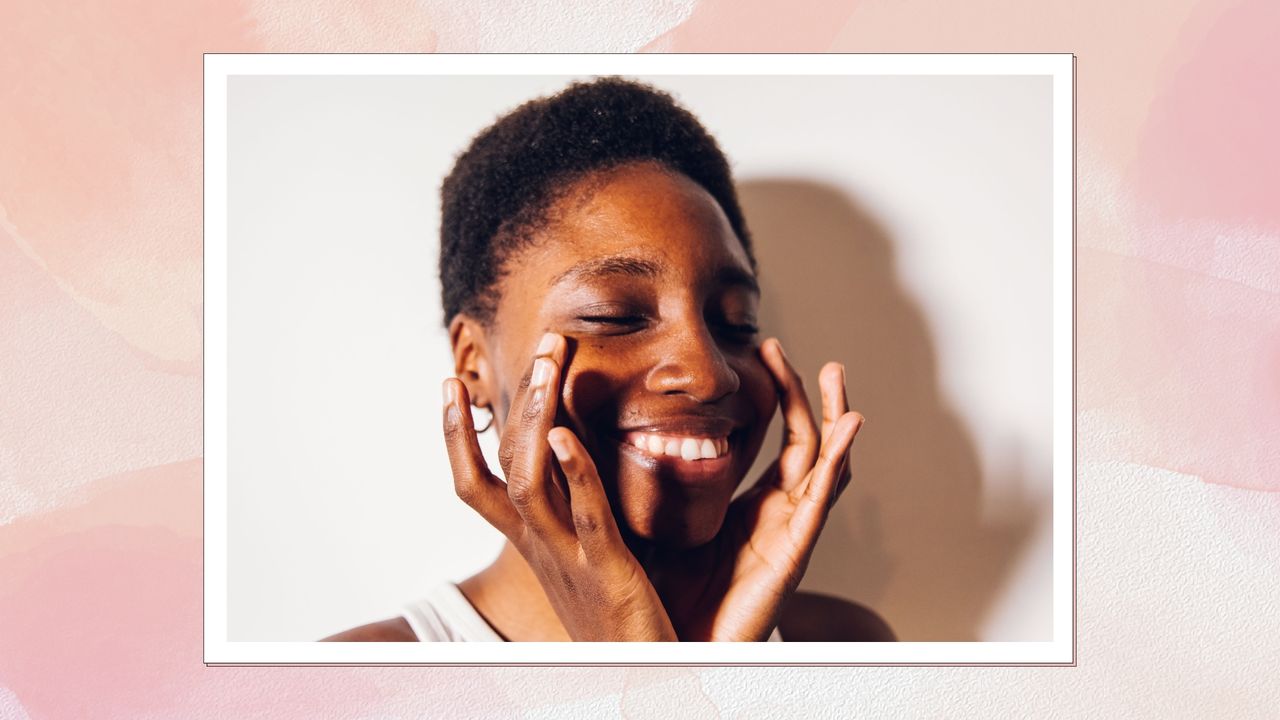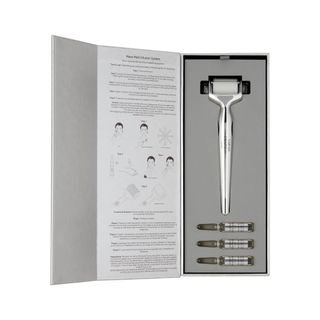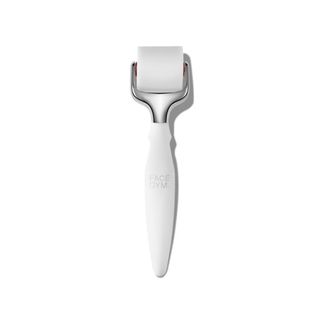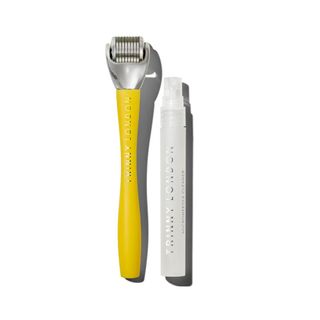I've just tried microneedling - here's what you need to know before booking in
Microneedling is a buzzy skincare treatment, but is it right for you? A beauty editor and skin experts reveal all


Microneedling is a hugely popular in-spa and -clinic treatment that’s backed by several skin experts and A-listers alike (Victoria Beckham, Jennifer Anniston and Gwyneth Paltrow are all reported fans). Promising to boost collagen, improve the appearance of scars and encourage healthy hair growth – it can tackle a multitude of concerns.
While we may have hydration boosters like the best hyaluronic acid serums at our disposal - along with the best retinol creams to target everything from wrinkles to texture - whenever a treatment promises to plump up the skin and boost glow, we pay attention. That's exactly why I jumped at the opportunity to try microneedling as part of the Signature Glow Facial at Dr Barbara Sturm’s London-based Boutique & Spa and I was blown away by the results. My skin immediately looked more radiant and, after a few weeks, it appeared plumper too.
While the treatment itself sounds scary, I can assure you it’s not. But as with all aesthetic procedures, it’s important to swot up on your research first to find out if it’s right for you. Ahead, the experts break down everything you need to know about microneedling, from what to expect to the key benefits.
What to know before microneedling, by a beauty editor
Let’s start by explaining what microneedling is, exactly. “The clue is in the name,” says Sarah Chapman, super facialist and founder of her eponymous skincare line and London-based clinic. “Microneedling – or ‘dermarolling’ – is an advanced method of puncturing the skin using multiple small needles at a very high speed.” This action causes ‘controlled micro trauma’ to the skin’s dermal layers, which is where important fibroblast cells responsible for producing collagen and elastin are located.
“Since the body goes into ‘repair mode’ due to these micro-injuries, those fibroblast cells are encouraged to create more collagen fibres. And as we know, more collagen equals better skin,” continues Chapman. Another advocate of microneedling, Dr Sophie Shotter, award-winning aesthetic doctor and founder of Illuminate Skin Clinic, adds that a handheld device is typically used in clinic – “either an automated microneedling pen or a manual roller containing very small needles to penetrate the skin at a controlled depth.”
By creating controlled micro lesions in the skin, not only does microneedling stimulate collagen regeneration – “but it also creates small tunnels that can help skincare ingredients reach deeper skin layers,” Dr Sturm tells us. So, as well as tightening and plumping the skin, this do-it-all treatment can make your skincare work harder too. Intrigued? Here, the experts break down 5 things to know before trying microneedling…
1. It can address several skin concerns
Collagen production starts to dwindle in our mid-twenties (we lose approximately 1% per year), and while microneedling can’t turn back the clock per se – it can help replace lost collagen. “Since it plumps up the skin by increasing collagen levels, microneedling is a great option for anyone looking to minimise signs of ageing, such as fine lines and wrinkles,” confirms Chapman.
Sign up for the woman&home newsletter
Sign up to our free daily email for the latest royal and entertainment news, interesting opinion, expert advice on styling and beauty trends, and no-nonsense guides to the health and wellness questions you want answered.
But don’t just take her word for it – there’s research to support these claims, too. Studies have shown that skin treated with four microneedling sessions, spaced one month apart, produced up to a 400% increase in collagen and elastin six months after completing treatment. Impressive, huh?
As well as plumping and tightening the skin, “it’s also an ideal treatment to give skin an overall boost and tackle more common or seasonal concerns like enlarged pores, texture and dullness,” continues Chapman. Dr Shotter also uses microneedling in her clinic to treat acne scars, surgical scars and stretch marks. “It can also be a good option for addressing hyperpigmentation.”
2. It's not suitable for everyone
Although micro-needling is touted as a do-it-all wonder treatment, it should be used with caution. “I would not recommend it to clients with active acne, as it may spread bacteria around the face and, as a result, increase the risk of infection,” says Chapman. “It’s also not advisable if you have a condition like eczema and dermatitis, or if the skin is already irritated and inflamed.”
Dr Shotter agrees and says that if the skin if actively inflamed, “I would first prioritise working on the health of the skin barrier before embarking on treatment.” If, however, you only have patches of skin which are inflamed or have active breakouts, both experts assure that these areas can be easily avoided during treatment.
3. The pain is minimal
“While puncturing the skin with needles may sound painful, microneedling is anything but; in fact, it’s often described as a light prickling sensation, like the kind you get when you scratch your skin with your fingernails,” assures Chapman. This is exactly how I would describe my experience with microneedling – a light, scratchy feeling on the skin’s surface. “Most clients at the clinic report little-to-no feeling throughout their sessions and our therapists also use a numbing cream for greater comfort,” adds Chapman.
Dr Shotter flags that there are some parts of the face which are a little more uncomfortable, such as the forehead and around the eyes. “I also find treatment with the microneedling pen (we have the SkinPen in clinic) far more comfortable than treatment with manual rollers,” she says. Nearing the end of the procedure, my skin did start to feel warm with a tight sensation, but this eased off quickly – with the help of a soothing serum that was applied by my aesthetician. “After treatment, you may experience a little redness or swelling but really, there’s very little downtime needed,” says Dr Sturm.
4. Aftercare is important
“Microneedling causes very small channels in your skin’s layers to allow up to 300% greater skincare absorption – so it’s important that any skincare applied during, or post-treatment is gentle and restorative rather than aggressive or overly stimulating,” says Dr Sturm. Dr Shotter recommends steering clear of any active ingredients like acids and retinol, “and remember that vitamin C is also a mild acid.”
“Hyaluronic acid is a wonderful ingredient to apply on top of microneedling because it intensively replenishes the skin’s moisture reservoirs at various skin layers while boosting skin barrier function,” says Dr Sturm. Skincare aside, Chapman also recommends limiting sun exposure three to four weeks before and after treatment, “due to the risk of pigmentation changes.”
One final piece of advice? “Be careful with anything that makes you hot and sweaty for 48 hours after treatment, as the sweat can be quite stingy on the sensitive, post-procedure skin,” warns Dr Shotter. Also note that “you will be red immediately after treatment and may experience some dryness and flaking over the first week or so post-procedure.”
5. You need a few treatments
Depending on your skin needs and goals, treatment will vary for everyone. “It’s important to note that for best results, people need to have a course of treatment and may not notice results from a single session alone,” says Dr Shotter. This is particularly important when treating scarring. Chapman agrees and recommends a course of three to five sessions to visibly reducing scarring and signs of ageing.
While long term results can start to be noticed from around a month after the procedure (as the formation of new collagen begins), many people notice some immediate improvements in skin texture and tone due to increased blood flow. “This is, however, a short-lived result,” notes Dr Shotter.
Why we think microneedling is an effective treatment option
“If you want to achieve intense results to resolve specific skin concerns, then microneedling is an extremely effective option that’s also minimally invasive – and therefore more comfortable than other procedures,” says Chapman. “Another immediate benefit of microneedling is better ingredient penetration,” points out Chapman, meaning whatever skincare you apply after treatment will penetrate deeper.
As with any advanced treatment, microneedling should be used with caution. If you’re unsure as to whether you’re a suitable candidate, consult a dermatologist or aesthetician first who can advise. But generally speaking, it’s a brilliant skin-boosting treatment that requires minimal downtime and delivers long-lasting results with just a few treatment sessions. If you want to try DIY microneedling, Chapman notes that although at-home derma-rollers are not as effective as professional ones, “they can help to even skin texture and improve the penetration of skincare products.”
Best at-home alternatives

RRP: £138
“My Meso-Melt Infusion System is perfect for those looking to try microneedling at-home,” says Chapman. Complete with a reusable roller, three roll-to-dissolve needle tips and three stem cell serum ampoules – you simply glide the roller across the skin before applying the serum and then rolling again. “Use once a week for three weeks for plumper, more radiant skin.”

RRP: £66
This easy-to-use tool comes with an active roller head that features crystallised microneedles infused with a cocktail of skin-savvy ingredients (including niacinamide, phyto-retinol and green tea extract). As the microneedles move over the skin, the ingredients get to work, smoothing skin and boosting moisture. Know that each active Roller head can only be used once (you can purchase a refill pack of four).

RRP: £44
Address fine lines and dullness with this affordable microneedle tool from Trinny London. Complete with a cleansing spray and a sample of Plump Up (a peptide and hyaluronic acid serum), simply roll the 0.5mm microneedle over skin, working in small sections, before applying the serum. Clean the tool immediately after and replace the head after 24 uses.
Emma Stoddart is a freelance beauty journalist and self-confessed skincare aficionado with over five years’ industry experience. Emma has worked for some of the UK’s top women’s titles including Net-A-Porter, Stylist and Grazia. Her experience spans online and print as well as producing editorial shoots with some of the industry’s biggest artists, including Val Garland. Asides from working with them behind the scenes, she’s also had the chance to interview the likes of Patrick Ta, Pat McGrath, and Sam McKnight for all their insider tips and tricks.
